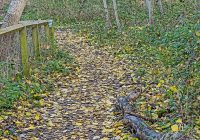Dr Phil Smith’s Wildlife Notes
December 2022
Two cold snaps early in the month were followed by much milder, damp weather, 15 days of measurable rain leading to a 20cm (8 inches) rise in the sand-dune water-table. Nevertheless, we had slightly less than normal rainfall for the month. The Met Office reported that December was the only month of 2022 with below average temperatures, this being the warmest year in the UK since records began in 1884. Their published graphs are a salutary reminder of the impact of climate change that will affect everyone in coming decades, including the politicians who prefer to ignore it.
As frequently reported in these notes, wildlife can be a barometer of climate change, especially those insects whose distributions are changing out of all recognition. Many of them are described in my forthcoming book on Insects of the Sefton Coast. Of course, the middle of winter is not the best time to observe them, though Pete Kinsella reported a remarkable six species of hoverflies at Crosby on 8th. I couldn’t compete with that but I did find two Marmalade Hoverflies at Wicks Path, Formby Point on 3rd. There were also several bluebottles and members of the housefly family on the south-facing fence. Winter Jasmine was in fine flower, together with Greater Periwinkle and White Deadnettle. There were even a few Giant Willow Aphids still lumbering along the bridge parapet at Wicks Lake, which I reached across a golden carpet of recently fallen Aspen leaves. My latest insect of the month was a Christmas Eve Housefly, briefly on the outside of my lounge window.
A combination of either low temperatures or cloudy, damp conditions meant more time spent indoors writing reports than out in the field. Exceptions included three ‘Buckthorn Bashes’, each with around 14 volunteers, clearing scrub on the dunes at Ainsdale. The event on 15th was the coldest ever, with hard frost on the vegetation and thick ice covering most of Sands Lake. A small area was kept open by a pair of Mute Swans and their offspring, together with a handful of ducks. We inadvertently flushed three Common Snipe and a Jack Snipe from the icy margin of the lake. In complete contrast, few days later all the ice had gone and the usual Mallard were joined by 20 Gadwall. The Gadwall flock was still present a few days later when I called in on my way to Southport to look for a Snow Bunting reported the day before. A long, cold walk along the seawall near the pier, with other birders, was unsuccessful. I continued on to Crossens where a female Marsh Harrier gave unusually close views as it hunted the saltmarsh. The trip ended with a female Common Scoter on Marshside Nature Reserve. I can’t remember seeing one here before.
Later in the month, I walked north from Sands Lake to check out sites for more Sea Buckthorn bashing. A real bonus was finding two new colonies of Variegated Horsetail, a Sefton Coast speciality that I set out to investigate in detail during the summer. These two were an important addition to the 17 sites that I recorded earlier, though it meant returning over the next couple of days to study the populations, followed by a major re-write of my draft paper.
One of my Buckthorn Bash team, Simon Slade, kindly sourced the details for two ringed Black-headed Gulls that I photographed at Southport Marine Lake in November 2021. They had large ‘Darvic’ rings that can be read at distance using binoculars or a telescope. One of the gulls had been logged at Southport on no less than 18 occasions between September 2017 and November 2021, while the other was seen, also at Southport, seven times from December 2020 to March 2022. Both occurred only between autumn and spring, so where did they breed? Many locally bred Blackheads stick around in winter but the population more than doubles from influxes of foreign birds. Ringing chicks shows that these gulls come mostly from northern and Eastern Europe, including Denmark and the Baltic states.
Winter is when most of the larger-scale management operations take place on the sand-dunes. Currently, we have the national Dynamic Dunescapes project, one of whose aims is to get rid of as much as possible of the horribly invasive Japanese Rose. I joined John Houston and the National Trust’s Isabelle Spall to see work in progress at Ravenmeols dunes where two big machines were scraping off large patches of rose and burying the material 2 m down. Later, I visited Shore Road, Ainsdale where the diggers had just cleared an enormous area of dense Japanese Rose on the north side of the road. I couldn’t believe how quickly it had gone – just a couple of days! This was the oldest and largest patch Japanese Rose on the coast, dating back to the early 1970s. The next target is the frontal dunes between Ainsdale and Birkdale. This work is costing an enormous sum, yet TV gardeners like Monty Don are still recommending it for planting in gardens, from where it readily escapes into the countryside!
Some forms of management are less intrusive, an example being livestock to replace the grazing activities of Rabbits, which used to keep down coarse vegetation and scrub before disease almost wiped them out. Traditional breeds such as Herdwick Sheep and Belted Galloway cattle are now widely used on the sand-dune nature reserves. The latest addition is a small herd of seven English Longhorns on Cabin Hill National Nature Reserve. These are youngsters, their spectacular horns being only a fraction of the size of an adult. Even so, they are impressive beasts and, together with a flock of Herdwicks, should make an impact on dense vegetation, creating more suitable conditions for sand-dune flora and fauna.






